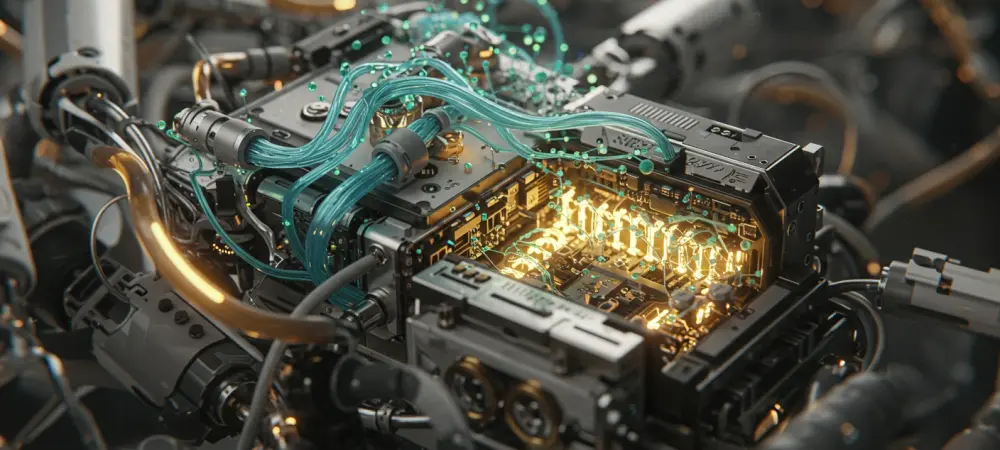In a groundbreaking stride toward the future of technology, researchers at Columbia University have unveiled a concept that could redefine the very nature of robotics, imagining a world where machines are no longer static creations bound by their initial design. Instead, they are dynamic entities capable of growth, repair, and transformation by assimilating components from other robots. This innovative approach, inspired by biological processes, allows robots to adapt autonomously to challenges, opening up possibilities for applications in extreme environments like deep space or disaster-stricken areas. Dubbed “Robot Metabolism,” this development marks a significant shift in how robotic systems are perceived, moving away from rigid frameworks to fluid, self-sustaining entities. The implications of such advancements promise to revolutionize industries, while also raising critical questions about control and ethics in an era of increasingly independent machines.
Unveiling the Concept of Robot Metabolism
Mimicking Biological Systems for Robotic Growth
At the heart of this technological leap lies the idea of Robot Metabolism, a process where robots can grow, heal, and evolve by consuming parts from other machines. Drawing inspiration from biological organisms that utilize environmental resources to repair and develop, researchers have engineered a system where robots operate with a similar level of autonomy. This means a robot could potentially disassemble components from another unit, integrating them into its own structure to enhance functionality or mend damage without human intervention. The significance of this lies in the potential for robots to become truly self-reliant, adapting to unforeseen challenges in real-time. Such a mechanism not only mirrors the resilience found in nature but also pushes the boundaries of artificial intelligence by enabling machines to make independent decisions about their form and capabilities. This paradigm shift could fundamentally alter the design and deployment of robotic systems across various sectors.
Autonomy as the Core of Adaptation
Delving deeper into the concept, autonomy stands as a cornerstone of Robot Metabolism, ensuring that robots can function without constant external support. This self-sufficiency is achieved through sophisticated algorithms that allow a robot to assess its needs, identify compatible components from other machines, and reconfigure itself accordingly. For instance, a robot operating in a remote location could sustain itself by repurposing parts from idle or damaged units nearby, thereby extending its operational life and efficiency. This level of independence is crucial for applications where human oversight is limited or impractical, such as long-term space missions or underwater explorations. By prioritizing self-reliance, researchers aim to create machines that not only survive but thrive in unpredictable conditions, adapting their structure and purpose as circumstances demand. The potential for such adaptability signals a future where robots are no longer just tools but active participants in problem-solving.
Applications and Implications of Self-Evolving Robots
Transforming Industries with Self-Repairing Machines
The practical applications of robots capable of self-repair and growth through component assimilation are vast and transformative. In industries like space exploration, where equipment weight and maintenance are critical concerns, these robots could significantly reduce the need for spare parts by repurposing materials from decommissioned units. Similarly, in disaster recovery scenarios, such as navigating flood zones or earthquake rubble, robots could dynamically adjust their form to suit the terrain by integrating available components, ensuring continuous operation with minimal downtime. The ability to self-diagnose and fix issues also optimizes resource use, as underutilized machines can contribute parts to those in active service. This innovation promises to enhance efficiency and resilience in high-stakes environments, paving the way for more sustainable and cost-effective solutions across multiple fields where adaptability is paramount.
Ethical Challenges and Future Oversight
While the potential of self-evolving robots is undeniable, it also introduces complex ethical and legal considerations that must be addressed. As these machines gain the ability to prioritize their needs, scenarios could arise where a robot dismantles critical human infrastructure, like a vehicle, for parts deemed more essential to its mission. Additionally, conflicts between robots from different manufacturers, each competing for resources, could create operational disruptions and legal disputes. These concerns highlight the necessity for robust guidelines to govern robotic behavior and ensure alignment with human interests. Developing frameworks to manage such autonomy will be crucial to prevent unintended consequences and maintain a balance between technological progress and societal safety. As this field advances, ongoing dialogue among researchers, policymakers, and industry leaders will be essential to navigate the challenges and harness the benefits responsibly.
A Look Back at Pioneering Progress
Reflecting on the strides made in robotic technology, the journey of Robot Metabolism at Columbia University stands as a testament to human ingenuity. Through the development of Truss Link modules, researchers demonstrated how robots could transform and collaborate by integrating parts from one another, achieving feats like enhanced mobility through adaptive structures. These early experiments laid the groundwork for machines that tackle complex challenges in extreme conditions, from space missions to disaster zones. The balance struck between innovation and caution in addressing ethical dilemmas shaped a narrative of progress tempered by responsibility. Looking ahead, the focus shifts to establishing comprehensive oversight mechanisms and fostering collaboration across sectors to ensure that such powerful technology serves humanity’s best interests, guiding the next steps toward a future where autonomous robots enhance lives without overstepping boundaries.

